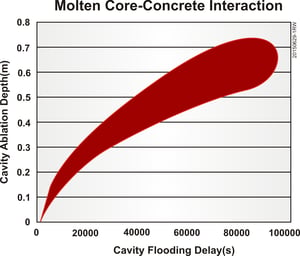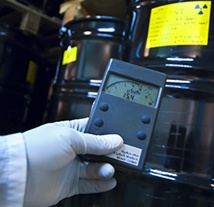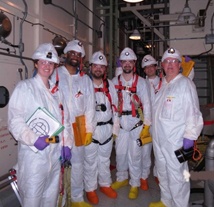Robert W. Reeves, Director, MAAP4 Maintenance, Fauske & Associates, LLC
The study of severe nuclear accidents and the various phenomena (steam explosions, in-vessel retention of the core debris, molten core concrete interactions, hydrogen combustion, etc…) associated with them are far from exact science. The use “uncertainty analyses” is the process of quantifying the range of possible results from a complex analysis. This process consists of performing numerous numerical analyses and investigating the impact of varying various inputs over a range of uncertainties to determine a “band” of results. Uncertainty analysis can be used to reduce the conservatism in an analysis and provide a more realistic calculation. In addition, many nuclear regulators are now requiring that uncertainty analyses be performed and presented.
The process of performing an uncertainty analysis involves a review of experimental evidence and literature to determine the uncertainty parameters and ranges of uncertain inputs for these parameters. The determination of the uncertain parameters is then followed by a stochastic analysis to propagate the uncertainties through an analytical model in order to calculate the range of outputs. The plot below illustrates an example of the impact of cavity ablation (erosion of the concrete material in the reactor cavity beneath the reactor vessel) depth on the time delay to submerge the core debris in a pool of water.

FAI was the principal author of the original Severe Accident Management (SAM) Technical Basis Report (TBR) (FAI/91-19 Volumes 1 and 2 also known as EPRI TR-101869). This report provided the technical bases upon which the PWR Owners Groups at the time (Westinghouse (WOG), Combustion Engineering (CEOG), and Babcock & Wilcox (B&WOG)) developed generic severe accident management guidance (SAMG) support material, which served as a framework for each utility’s plant-specific SAMG program.
In the aftermath of the Fukushima accident, EPRI commissioned an update to the original TBR, and FAI again was a principal author in this update. In addition to the immediate insights from the Fukushima accident, the TBR update also incorporates a significant amount of research and experimental information that post-dated the original TBR and therefore was absent from the technical basis.
For more information, please contact Bob Reeves at reeves.fauske.com or 630-887-5220, www.fauske.com











